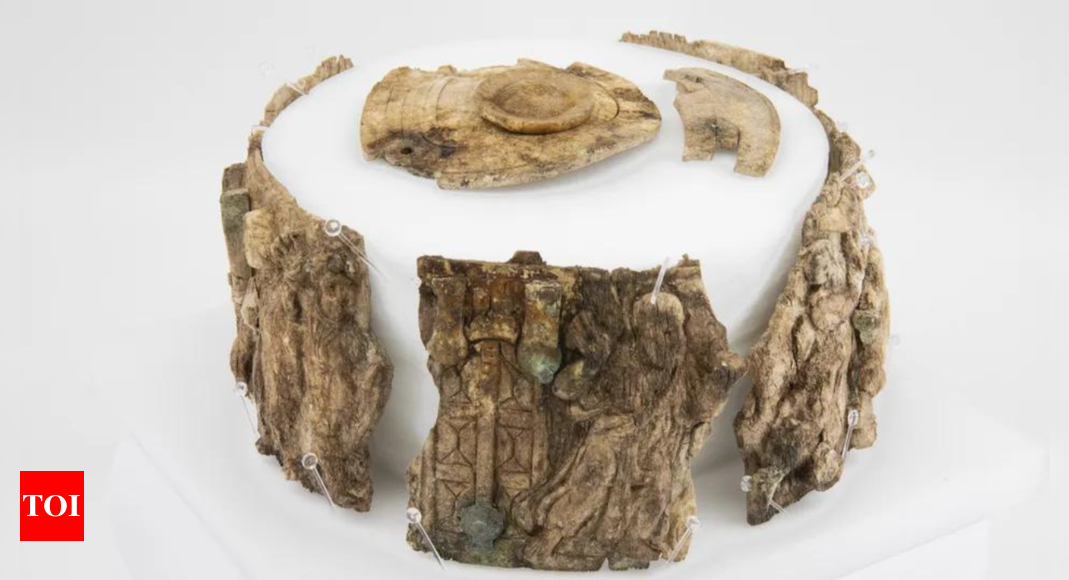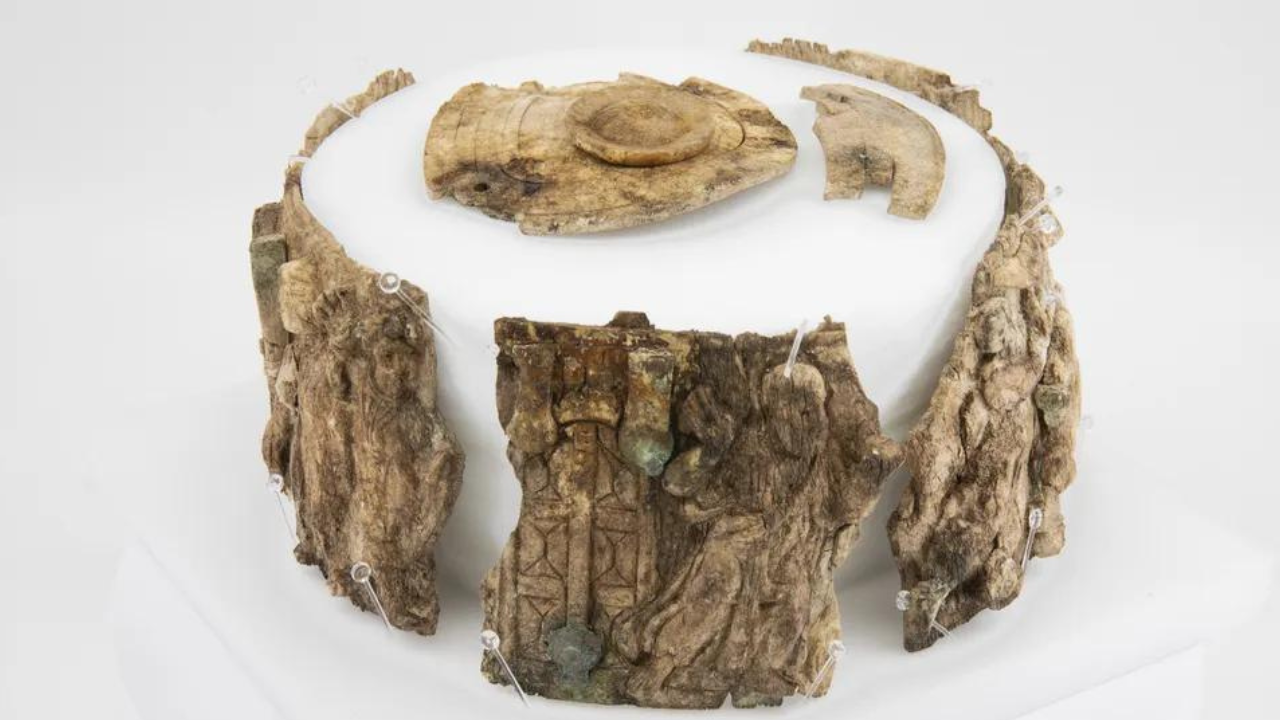Archaeologists discovered a 1,500-year-old ivory box within a marble shrine under an altar at a chapel on Burgbichl hill in Irschen, Austria.
The box, adorned with Christian motifs, is believed to be tied to Moses receiving the Ten Commandments, according to Fox News report. The relic was discovered by Archaeologists from Innsbruck University.
The marble shrine, unearthed during the excavations, contained an ivory box, also known as a pyx.In a press release, Gerald Grabherr, the lead archaeologist, noted its rarity and said, “We know of around 40 ivory boxes of this kind worldwide and, as far as I know, the last time one of these was found during excavations was around 100 years ago – the few pyxes that exist are either preserved in cathedral treasures or exhibited in museums.”
The pyx decorated with various motifs featuring biblical scenes, one of which shows a man turning his head with a hand rising out of the sky above him, placing something between his arms, followed by other biblical figures. Grabherr explained, “This is the typical depiction of the handing over of the laws to Moses on Mount Sinai, the beginning of the covenant between God and man from the Old Testament.”
Another motif on the pyx depicts a man in a chariot pulled by two horses, with a hand coming out of the clouds, pulling this figure into heaven. Grabherr said, “We assume that this is a depiction of the ascension of Christ, the fulfillment of the covenant with God. The depiction of scenes from the Old Testament and their connection with scenes from the New Testament is typical of late antiquity and thus fits in with our pyx; however, the depiction of the Ascension of Christ with a so-called biga, a two-horse chariot, is very special and previously unknown.”
The archaeological team also unearthed two Christian churches, a cistern, and personal belongings of past inhabitants of the settlement. This settlement, located in the Carinthian Drava Valley, saw residents move to hilltops that were easier to defend towards the end of the Roman Empire, as times became more uncertain.
Further analysis is being conducted on the origins of the ivory, metallic components, and wooden parts found within the marble box. “The archaeological and art-historical significance of the pyx cannot be denied,” according to Grabherr.
The box, adorned with Christian motifs, is believed to be tied to Moses receiving the Ten Commandments, according to Fox News report. The relic was discovered by Archaeologists from Innsbruck University.
The marble shrine, unearthed during the excavations, contained an ivory box, also known as a pyx.In a press release, Gerald Grabherr, the lead archaeologist, noted its rarity and said, “We know of around 40 ivory boxes of this kind worldwide and, as far as I know, the last time one of these was found during excavations was around 100 years ago – the few pyxes that exist are either preserved in cathedral treasures or exhibited in museums.”
The pyx decorated with various motifs featuring biblical scenes, one of which shows a man turning his head with a hand rising out of the sky above him, placing something between his arms, followed by other biblical figures. Grabherr explained, “This is the typical depiction of the handing over of the laws to Moses on Mount Sinai, the beginning of the covenant between God and man from the Old Testament.”
Another motif on the pyx depicts a man in a chariot pulled by two horses, with a hand coming out of the clouds, pulling this figure into heaven. Grabherr said, “We assume that this is a depiction of the ascension of Christ, the fulfillment of the covenant with God. The depiction of scenes from the Old Testament and their connection with scenes from the New Testament is typical of late antiquity and thus fits in with our pyx; however, the depiction of the Ascension of Christ with a so-called biga, a two-horse chariot, is very special and previously unknown.”
The archaeological team also unearthed two Christian churches, a cistern, and personal belongings of past inhabitants of the settlement. This settlement, located in the Carinthian Drava Valley, saw residents move to hilltops that were easier to defend towards the end of the Roman Empire, as times became more uncertain.
Further analysis is being conducted on the origins of the ivory, metallic components, and wooden parts found within the marble box. “The archaeological and art-historical significance of the pyx cannot be denied,” according to Grabherr.

